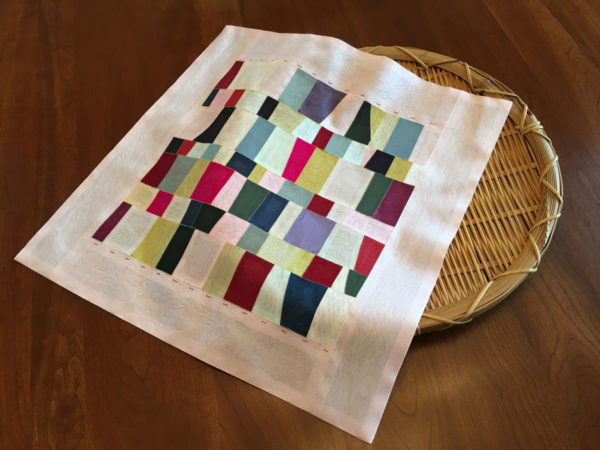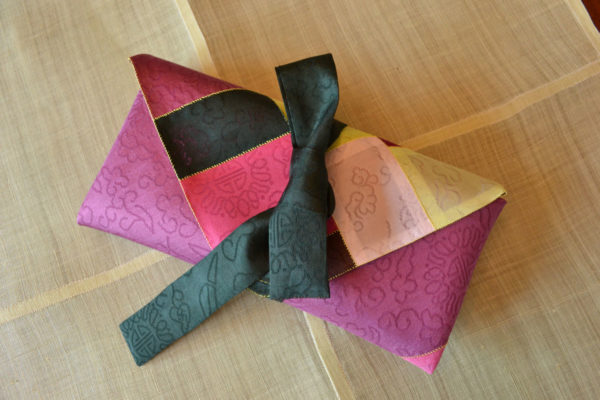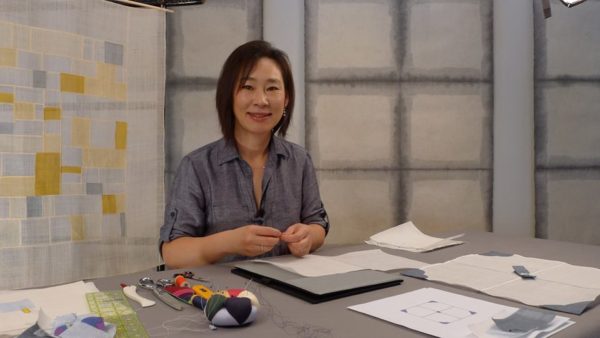Register by May 1, 2016. After that, check availability.
Materials Fee: $30
Download Bojagi-Korean Textile Wrapping Cloths materials list

Bojagi (Wrapping Cloths) is perhaps the most unique form of Korean textile art. It is also strikingly contemporary: the designs and colors of bojagi remind one of the works of some modern abstract artists. Indeed, the bojagi can be described as a true form of abstract expressionism. Bojagi are Korean textiles which are pieced together from small scraps of cloth.
Bojagi occupied a prominent place in the daily lives of Koreans of all classes. They were used to wrap or carry everything from precious ritual objects to everyday clothes and common household goods and also to cover foodstuffs from ritual offerings to dining tables and trays.
Many different bojagi can be categorized by the class of users, make-up, design, material and size.
Gungbo is the bojagi used in the royal palace to wrap various kinds of goods. It was produced by the artisan organizations that were specialized in each step in the whole process – weaving, dyeing, drawing, sewing and etc.
Minbo is the bojagi used by common people. There were many kinds of minbo as diverse as the items wrapped. People used bojagi for daily use purposes, weddings, special events and rituals.
Bojagi are usually square and come in a range of sizes. Fabrics used in bojagi include silk, cotton, hemp and ramie. There are many different types of bojagi including lined or unlined, embroidered, painted, gold-leafed, quilted.

About the instructor
Korean-born artist Youngmin Lee holds a master’s degree in fashion design and a bachelor’s degree in clothing and textiles. She has presented numerous workshops, classes and demonstrations on Korean arts and crafts around the Bay Area. Recently she demonstrated her Bojagi and Maedub in Asian Art Museum in San Francisco as a part of Asia Alive Program. She also participated in Oakland Museum’s Lunar New Year celebration with her Bojagi and Maedub artworks.

 Gualala Arts Promoting public interest and participation in the arts since 1961
Gualala Arts Promoting public interest and participation in the arts since 1961